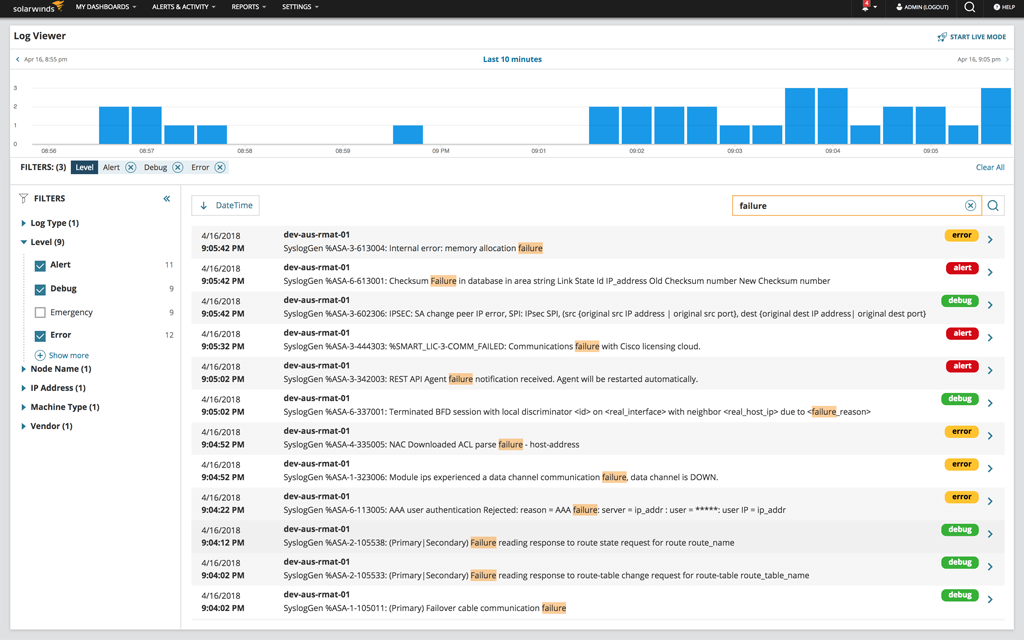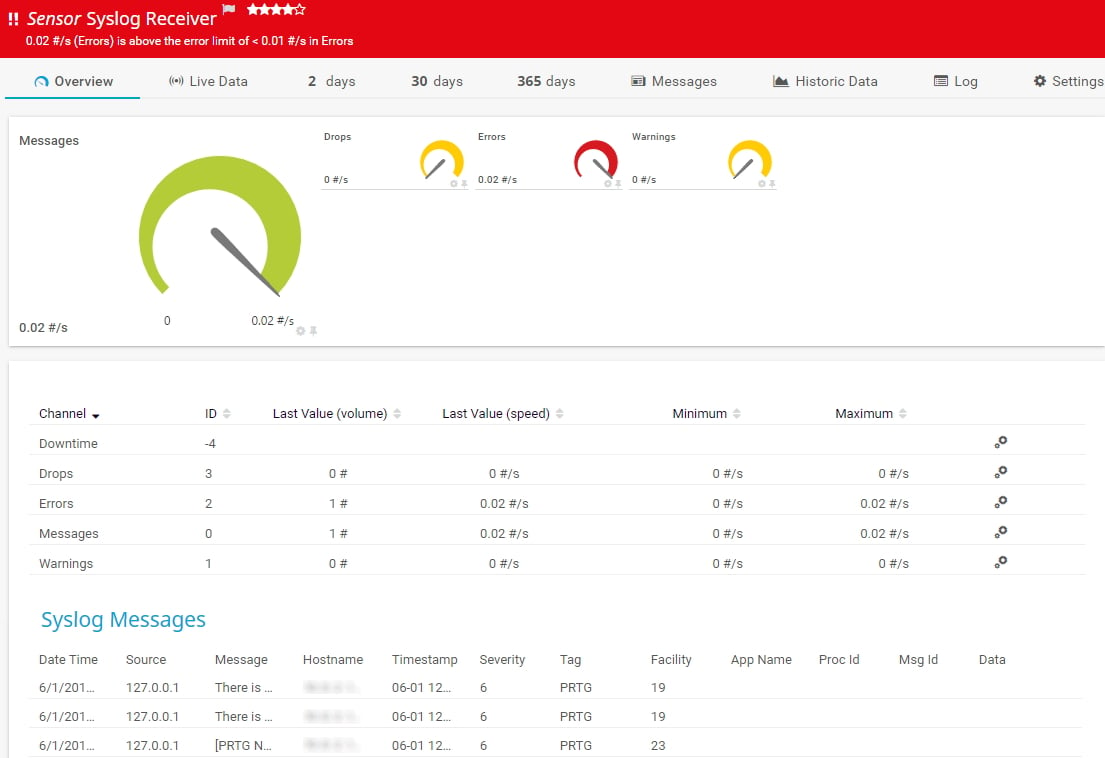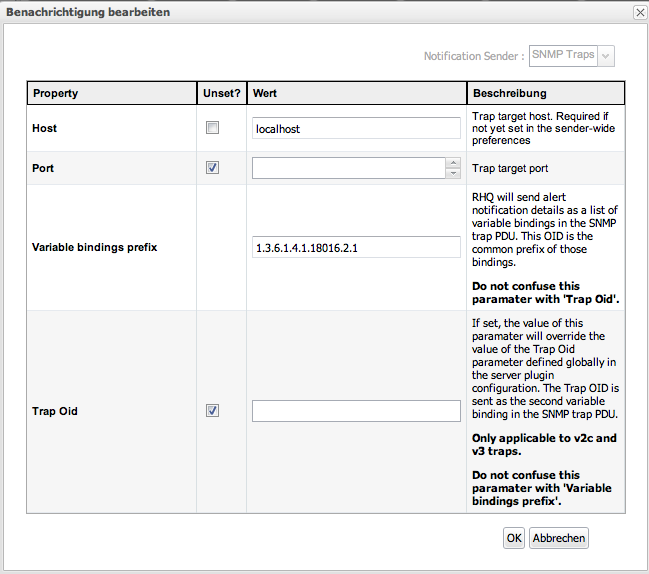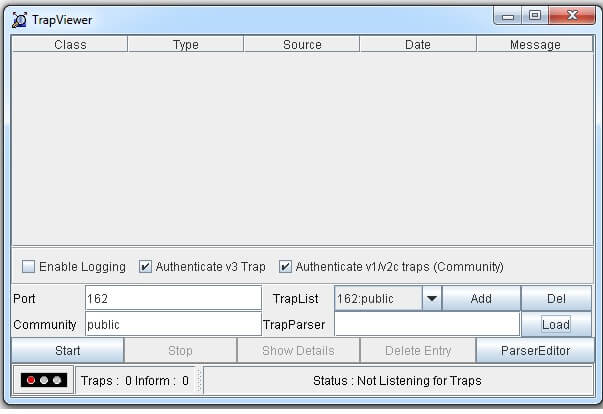

- #SNMP TRAP RECEIVER LOGS SOFTWARE#
- #SNMP TRAP RECEIVER LOGS FREE#
- #SNMP TRAP RECEIVER LOGS MAC#
- #SNMP TRAP RECEIVER LOGS WINDOWS#
The SNMP Grapher is a part of the free SNMP tools by ManageEngine. The SNMP data to be polled should be of integer or unsigned integer data type (Counter, Gauge, or Time ticks). SNMP Graph tool provides SNMP Graphing along with the MIB node information like OID, syntax, description and MIB node properties. SNMP Graph utility of OpUtils software is a SNMP tool used to gather real time data and draws a graph for any SNMP IP node.


#SNMP TRAP RECEIVER LOGS WINDOWS#
Perform SNMP operations from Windows and Linux devices.Load/unload MIBs and fetch MIB data of SNMP(v1, v2c, v3) agent.The above stated operations along with the SNMP MIB scanner can be performed on the specified agent in the MIB browser tool. With MIB browser tool, you can perform all SNMP-related operations such as GET, GET-NEXT, GET-BULK, and SET. The SNMP MIB Browser tool is a network utility that enables you to load and browse MIBs and perform various operations. OpUtils’ free SNMP tools include MIB Tools such as ManageEngine MIB Browser. SNMP Trap Receiver – SNMP Trap Monitor is a SNMP tool used to collect, view, and manage SNMP traps.Community Checker - SNMP Utility to detect the read and write community strings of the devices in the network.

#SNMP TRAP RECEIVER LOGS SOFTWARE#
On cisco switch make sure this user exists with same username/password and priv/auth.SNMP monitoring software has become network management essentials for any network admin, providing visibility into their network devices and infrastructure. Traphandle default /etc/snmp/snmp-traphandle_script # can be any programĪuthUser log,execute,net $Įxample user could be: # createUser networkmonitor MD5 cisco1234! AES-128 cisco1234! etc/snmp/nf: traphandle default /etc/snmp/send_to_email_script # make sure it is executable This works with a brand new Cisco Nexus switch (nx-os) and hoping this will help someone else: format2 %V\n% Agent Address: %A \n Agent Hostname: %B \n Date: %H - %J - %K - %L - %M - %Y \n Enterprise OID: %N \n Trap Type: %W \n Trap Sub-Type: %q \n Community/Infosec Context: %P \n Uptime: %T \n Description: %W \n PDU Attribute/Value Pair Array:\n%v \n - \n It took a long time to figure this out to be able to use snmptrapd without needing the engineID. # No traps are handled by default, you must edit this file!ĬreateUser -e 0x0102030405 myuser MD5 mypassword DES myotherpasswordĬreateUser -e 0x0102030405 myuser2 MD5 mypassword DES myotherpasswordĬreateUser -e 0x0102030406 myuser2 MD5 mypassword DES myotherpasswordĬreateUser cisco SHA cisco123 DES cisco123 Here is my nf # Example configuration file for snmptrapd Is it possible to configure snmptrapd to accept all traps by authenticated users without specifying engineID? And I can see trap arrives on interface in wireshark, but snmptrapd does nothing.
#SNMP TRAP RECEIVER LOGS MAC#
But when I configure cisco router to send me linkDown trap it uses MAC address with some extra bytes as engineID. I'm already have such script and it works with snmp v1, v2c traps and with snmpv3 traps but only when I specify engineID explicitly both in config and in command sending trap. I'm trying to make some perl script to handle snmp traps. I'm using snmptrapd on linux from net-snmp package.


 0 kommentar(er)
0 kommentar(er)
